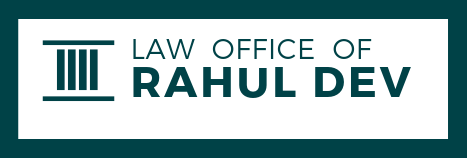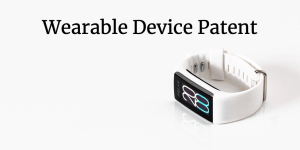Refusal of software patent by Indian Patent Office for a patent filed by Google claiming wearable device. Although several software patent applications are granted by the patent office in India, certain cases are not approved and one such example is discussed here.
Google filed a patent in India titled System and Method of Wearable Electronics bearing application number 9486/DELNP/2007 and date of filing as 07.12.2007. In accordance with the patent procedure in India, a request for examination by way of Form 18 was filed 28.12.2007, and subsequently, a patent office action or the First Examination Report (FER) was issued by the patent office on 23.04.2013.
Patent Examination in India
The examination conducted under Sections 12 and 13 of the Patent Act 1970 raised the following objections:
- The claims from 1 – 32 do not constitute an invention under Section 2 (1) (j) of the Act as amended in 2005.
- All essential features of the apparatus must be characterized intelligibly under a characterized clause.
The patent examiner specifically objected against the patent claims and asked the patent applicant to divide the patent claims into two parts. Specifically, the examiner stated that the first part must lay down the known features in combination with prior art (PREAMBLE), and the second part should explain the novel features (CHARACTERIZATION CLAUSE).
In addition, the patent examiner stated that the phrase “further comprising” shall be replaced with “wherein” in claims 5-8,10-12, 16, 22-25, 27-28 and 30-32, along with stating that Claim 21 shall be redrafted.
As a standard requirement, the patent examiner stated that details regarding the search and/or examination as under Rule 12(3) of the Patent Rule, 2003, in respect of same or substantially the same invention filed in all countries outside India along with appropriate translation where applicable, shall be submitted via Form 3 within a period of 6 months from the date of receipt of this communication as provided under section 8(2) of the Act.
Thereafter, while filing a response to such examination report on 23.04.2014, a revised patent application document was filed by the patent applicant with amended claims to overcome the objections raised in the FER. The detailed reply included claim by claim submission as follows:
- For the first objection, the applicant submitted that the claim specifies the characterizing feature within the claims itself that differentiates the inventive feature of the invention. Claims were modified, where the originally filed claims 1 -32 were amended to claims 1 – 20. The applicant requested the withdrawal of the objection.
- The filed claims have been amended as requested under the Second objection, accordingly. The applicant requested the reconsideration and waiving of this objection.
- Since the claims 21 – 31 have been deleted and the remaining have been amended, the objection was asked to be reconsidered.
- Claim 21 was deleted.
- For objections 5, 6, 7 and 8, the necessary documents were submitted and a request for waving of the objection was put forth.
- Additional submissions included filing a petition for Condonation of Delay under Rule 137 as required under section 8 of the Act and also, an opportunity to be heard as per Section 14 of the Act in the case of an adverse decision was requested.
After considering the reply filed in response to the FER it was observed that the said patent application was not in order for grant. In view of the Patents Act, 1970 (as amended) and to provide natural justice to the applicant, a hearing was offered to the applicant on 28.08.2019.
As per hearing notice dated 27.08.2019, additional objections included:
- The application does not meet the requirements of sec 2(1) (ja) of the Indian Patent Act because the subject matter of claims lacks an inventive step in the documents.
- Indicate in the support for the claims in the original specification, as required u/s 10(4) of the Act, ensuring Section 59 (1) of the Act is also adhered to. Please provide an additional copy of marked-up amendments (highlighting the amendments) where ever applicable.
- Formal Requirements:
- The applicant has not submitted form 6 for change of applicant from Lawrence, Kate–>Google, Inc.
- Proper fee for application and forms has not been paid by the applicant, therefore remaining fee should be paid by the applicant. Balance fees in respect of additional claims and pages (corresponding to international application) should be submitted immediately along with necessary petition and fees
iii. Updated forms should be filed showing the changes made as a result of Form 6 and Form13 and that of the change in the applicant’s name and address should be indicated.
- Drawings have to be filed as per rule 15 of Patents Rules and must be improved as they do not represent the intent of the applicant clearly.
- The petition for the delay in filing an annexure of Form 3 has not been submitted with the prescribed fee.
Thereafter, the patent applicant filed written submissions stating:
- The claims of the inventions are inventive and constitute an invention under the Act. The applicant brought up the pending claims that are in conformance with the granted claims in the corresponding US Application, further substantiating the novelty and inventiveness of the present invention.
- The applicant submitted that the claims find their support in the specifications and drawings filed which are in accordance with section 59 of the Act.
For both objections, the reply was to present arguments and subsequently request the withdrawal of the objection.
For the formal requirements the following submissions were made:
- Form-1, Form-2, Form-3, Form-5 and Form-18
- Fresh formal drawings submitted
iii. The Appropriate Balance Fee in respect of the petition and the application has been filed respectfully. (attaching the receipt of the same to the written submission of the hearing)
- Filed another Form 6 to meet the requirements of the Controller.
Patent Refusal
After the hearing, there were no changes made in the claims, and all claims 1 – 20 that were pending at the time of issuance of the hearing notice remained untouched. The grounds for the refusal included:
- NON – OBVIOUS TO THE PERSON SKILLED IN THE ART: Citing multiple Supreme Court Judgements, the Controller stated that as per the Section 2 (1) (ja) although the inventive step of the invention in question may pass the test of the first part of the section, but it falls back on the second. The invention is seeking to combine already known features and is an aggregation of already known devices that function independently of one another.
Citing Ram Pratap v Bhabha Atomic Research Centre (1976) IPLR 28, the patent office pointed out that a mere collocation of features already known before the priority date, which have subjectively been chosen from a number of combinations which could be chosen, was not a patentable invention.
- The invention does not meet the requirements of section 2 (1) (j) in view of D1 and/or D2 and/or D3.
3. PERFORMANCE NOT CORRECTLY DESCRIBED IN COMPLETE SPECIFICATION: In view of the objection raised under Section 10 (4), the Controller was not satisfied with the submissions made stating that the applicant does not state the ‘what’ and ‘how’ of the invention in question. The applicant has combined the various features on paper just by mentioning their names and has not disclosed how the features will be integrated with the claimed apparatus. This points to the fact that the alleged invention expects that the person implementing the alleged invention would know the working of the various elements. Multiple case laws were cited to prove this conclusion.
We provide comprehensive Patent and Trademark legal services via our global network to create valuable patent portfolios and resolve complex patent disputes by providing patent litigation support services.
Our team of advanced patent attorneys assists clients with patent searches, drafting patent applications, and patent (intellectual property) agreements, including licensing and non-disclosure agreements.
Advocate Rahul Dev is a Patent Attorney & International Business Lawyer practicing Technology, Intellectual Property & Corporate Laws. He is reachable at rd (at) patentbusinesslawyer (dot) com & @rdpatentlawyer on Twitter.
Quoted in and contributed to 50+ national & international publications (Bloomberg, FirstPost, SwissInfo, Outlook Money, Yahoo News, Times of India, Economic Times, Business Standard, Quartz, Global Legal Post, International Bar Association, LawAsia, BioSpectrum Asia, Digital News Asia, e27, Leaders Speak, Entrepreneur India, VCCircle, AutoTech).
Regularly invited to speak at international & national platforms (conferences, TV channels, seminars, corporate trainings, government workshops) on technology, patents, business strategy, legal developments, leadership & management.
Working closely with patent attorneys along with international law firms with significant experience with lawyers in Asia Pacific providing services to clients in US and Europe. Flagship services include international patent and trademark filings, patent services in India and global patent consulting services.
Global Blockchain Lawyers (www.GlobalBlockchainLawyers.com) is a digital platform to discuss legal issues, latest technology and legal developments, and applicable laws in the dynamic field of Digital Currency, Blockchain, Bitcoin, Cryptocurrency and raising capital through the sale of tokens or coins (ICO or Initial Coin Offerings).
Blockchain ecosystem in India is evolving at a rapid pace and a proactive legal approach is required by blockchain lawyers in India to understand the complex nature of applicable laws and regulations.


You must be logged in to post a comment.